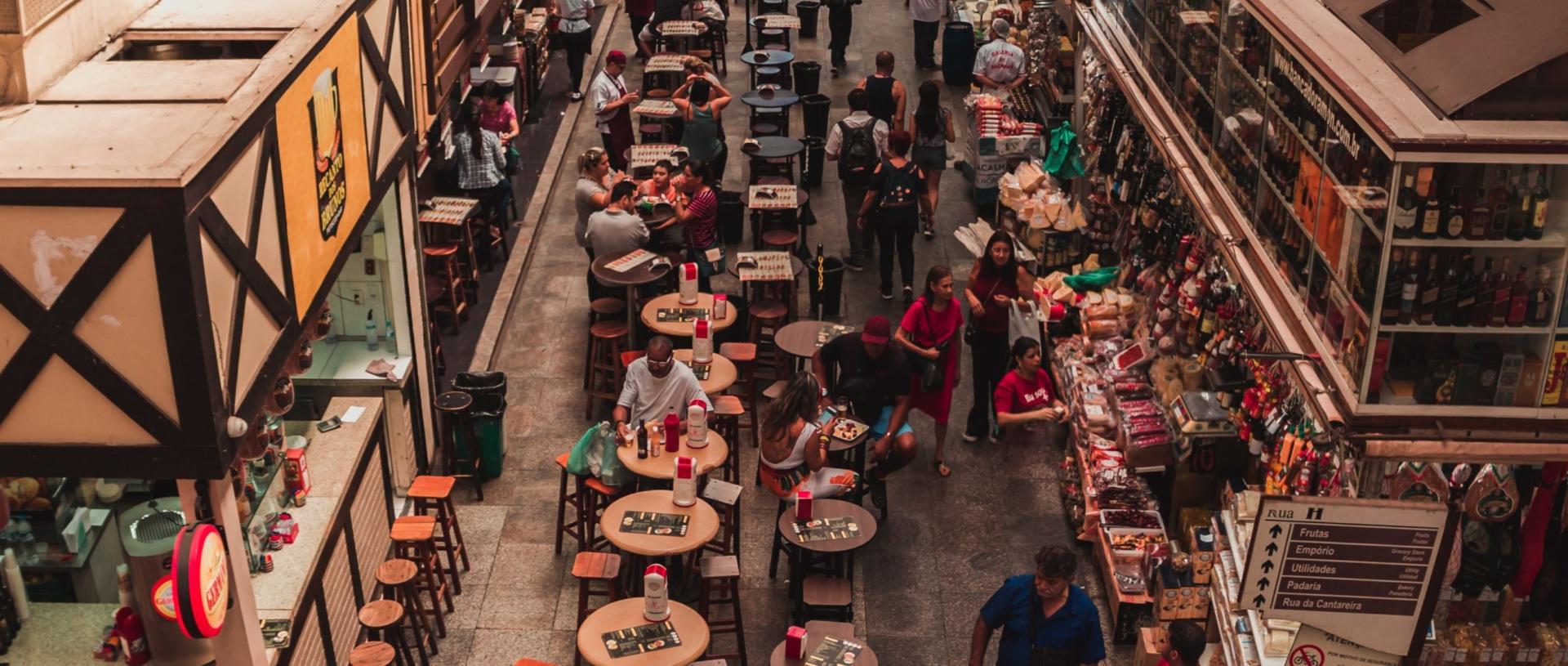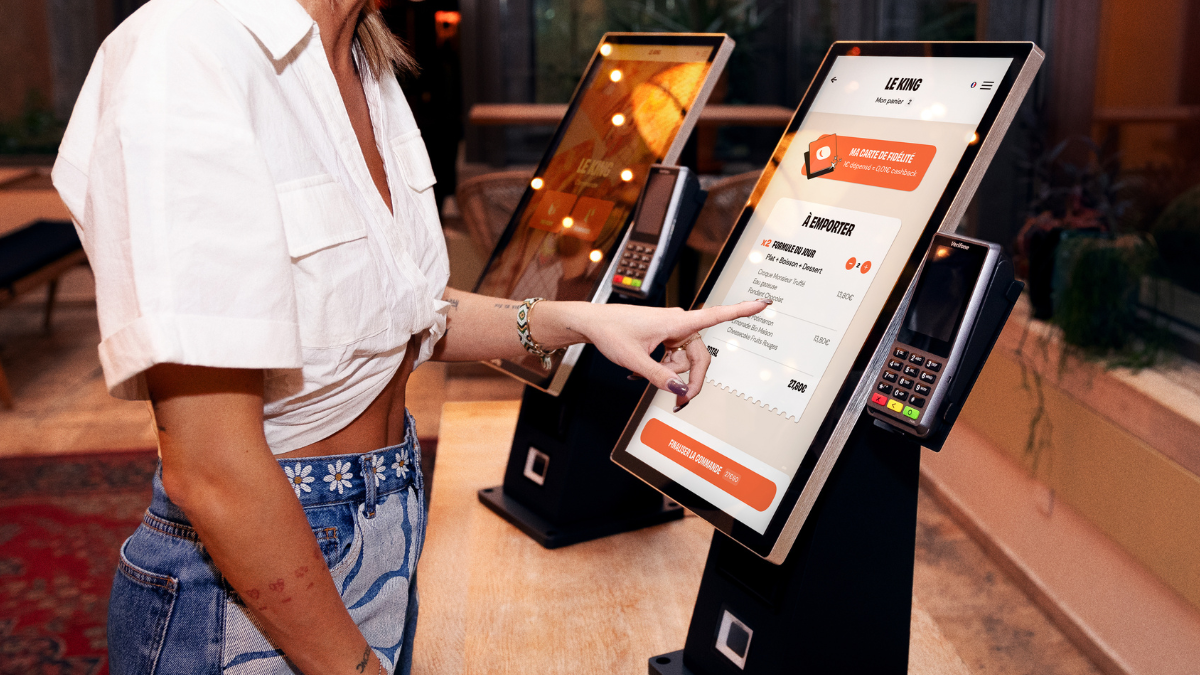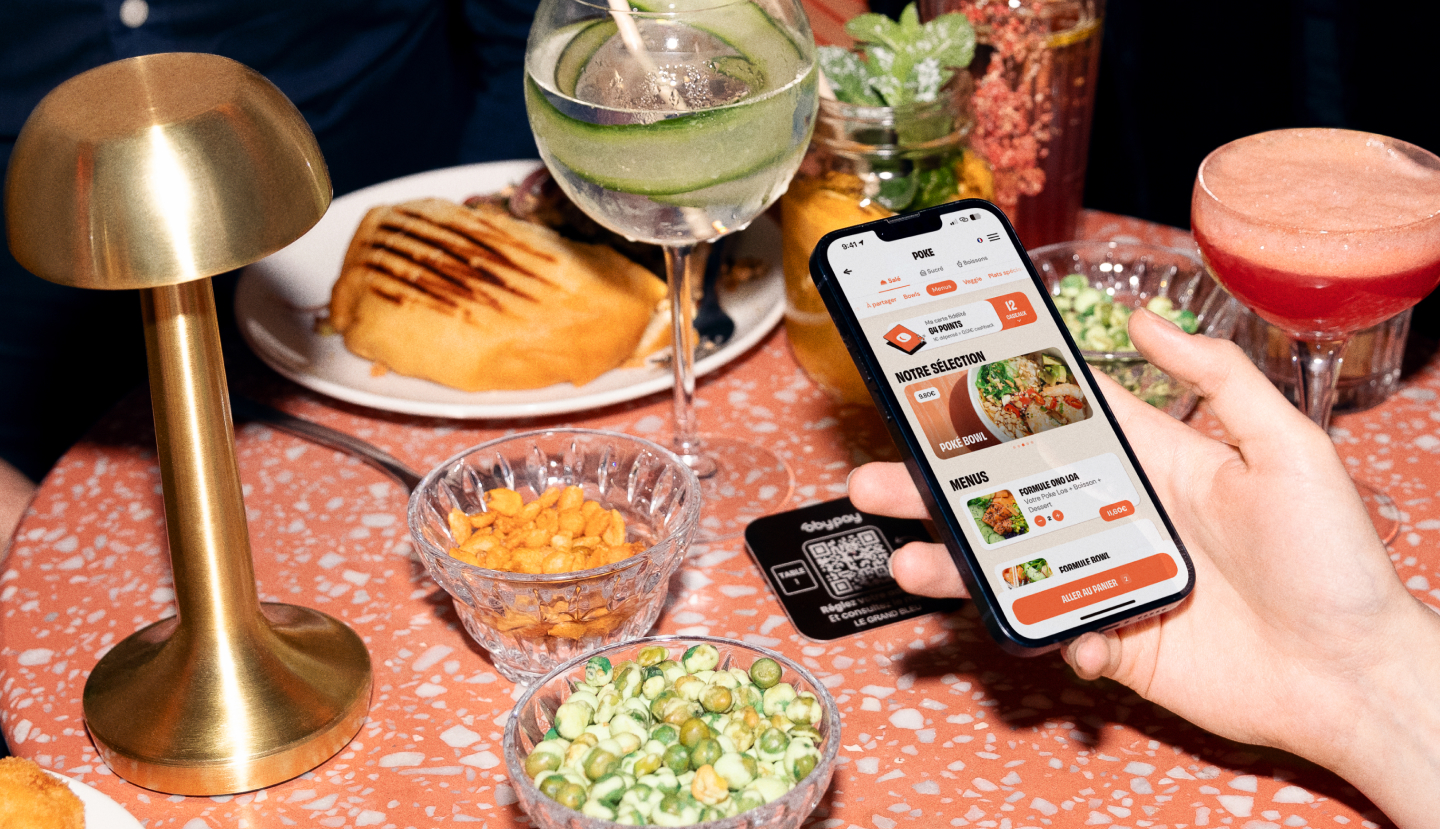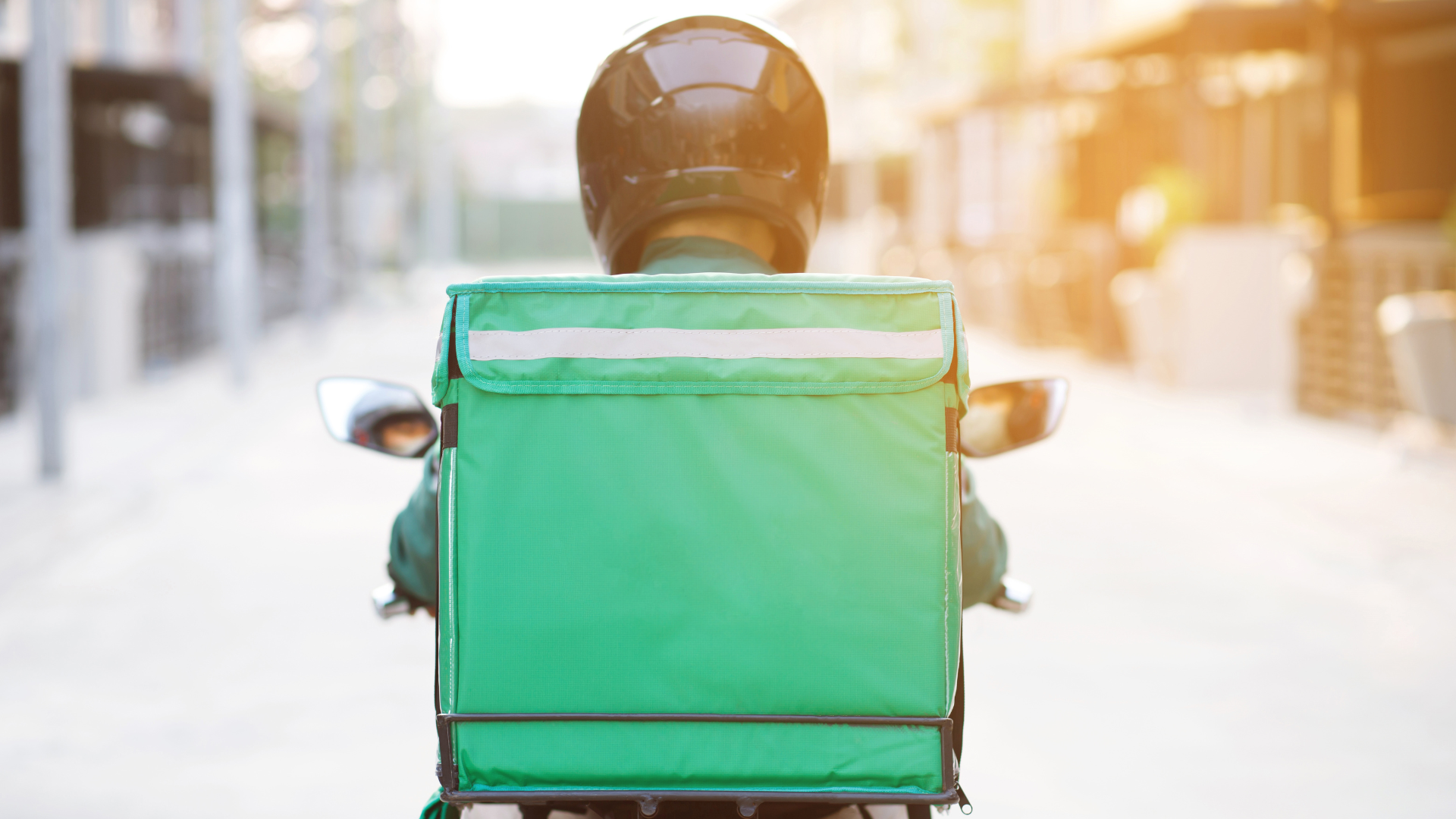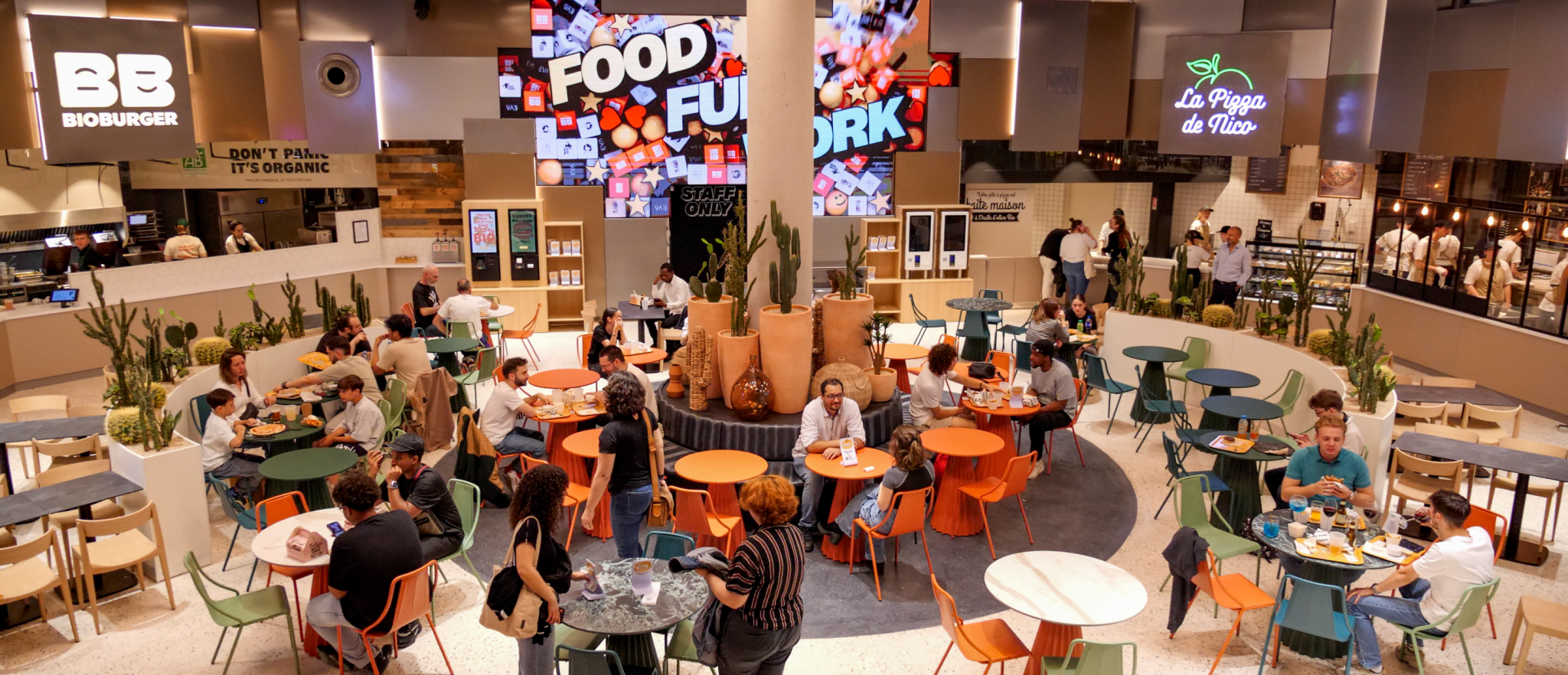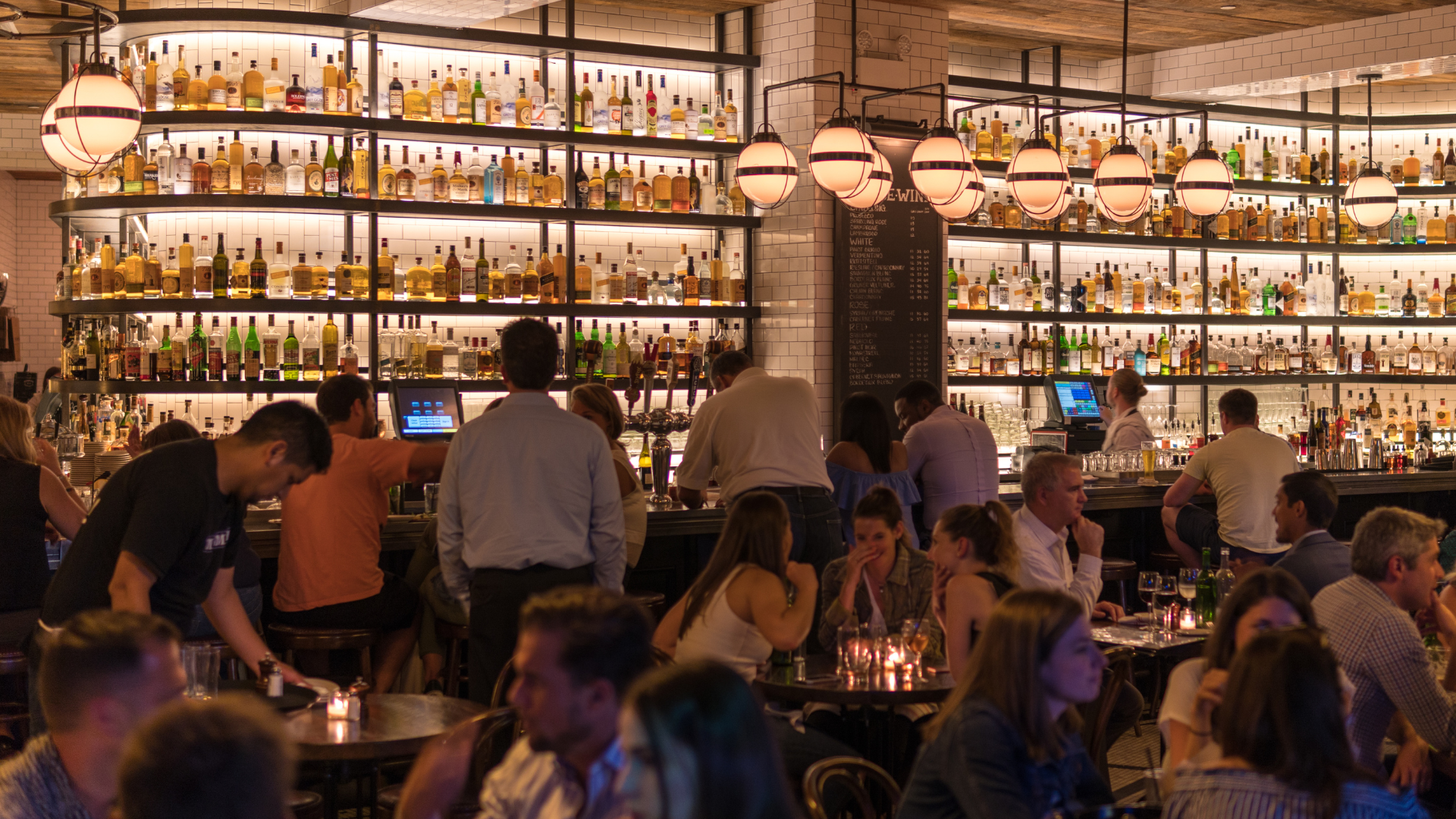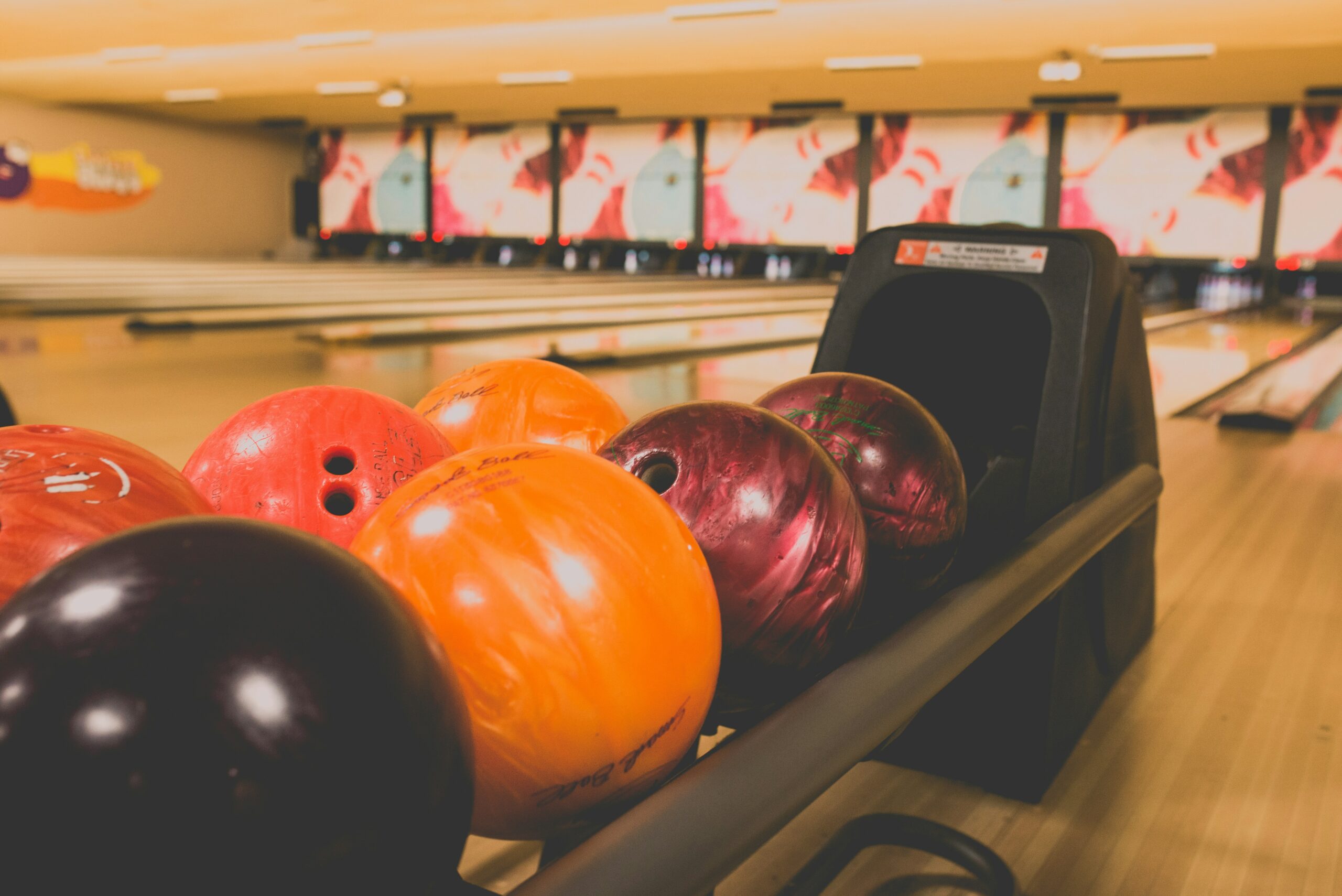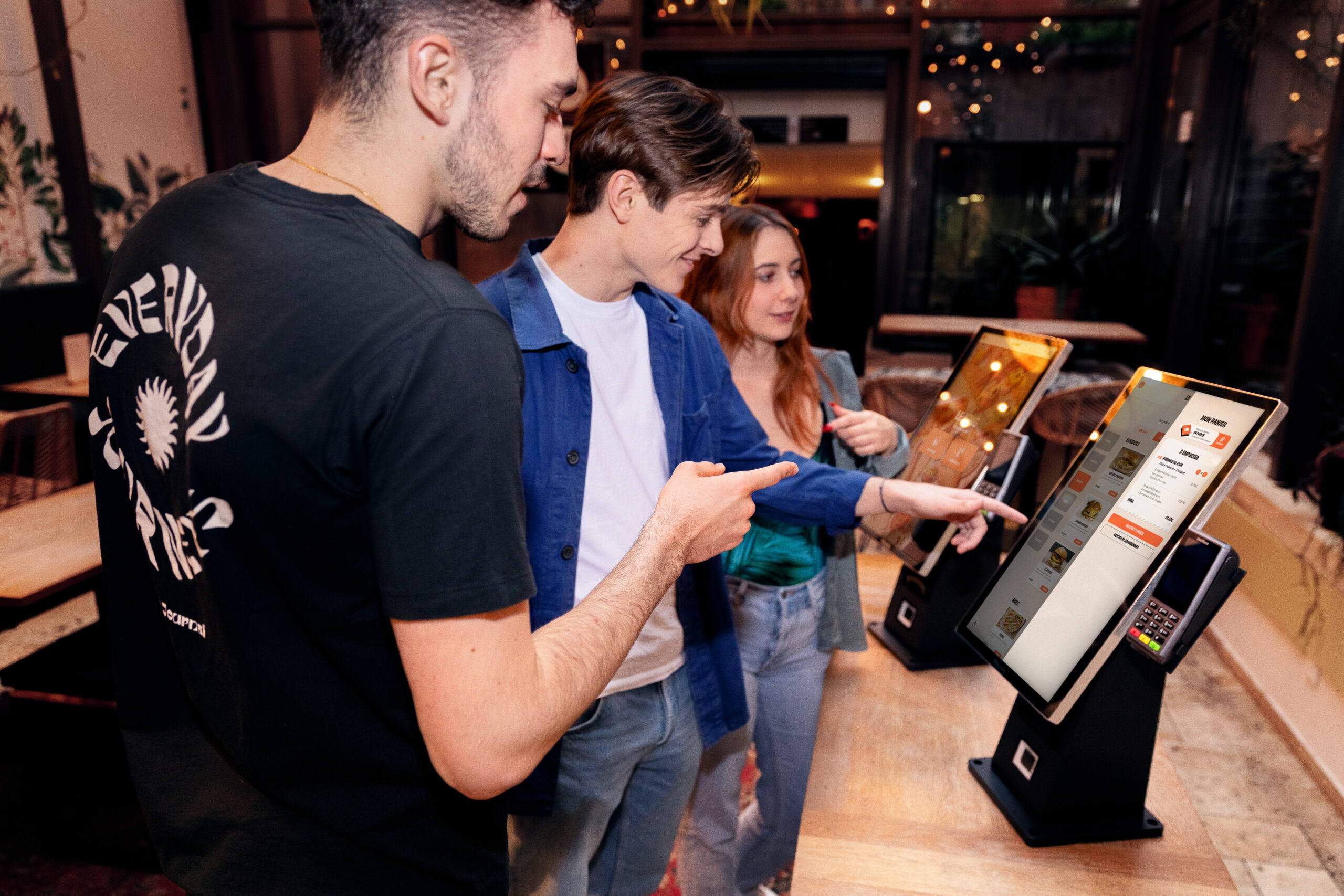Kiosks: the advantages of leasing
August 19, 2024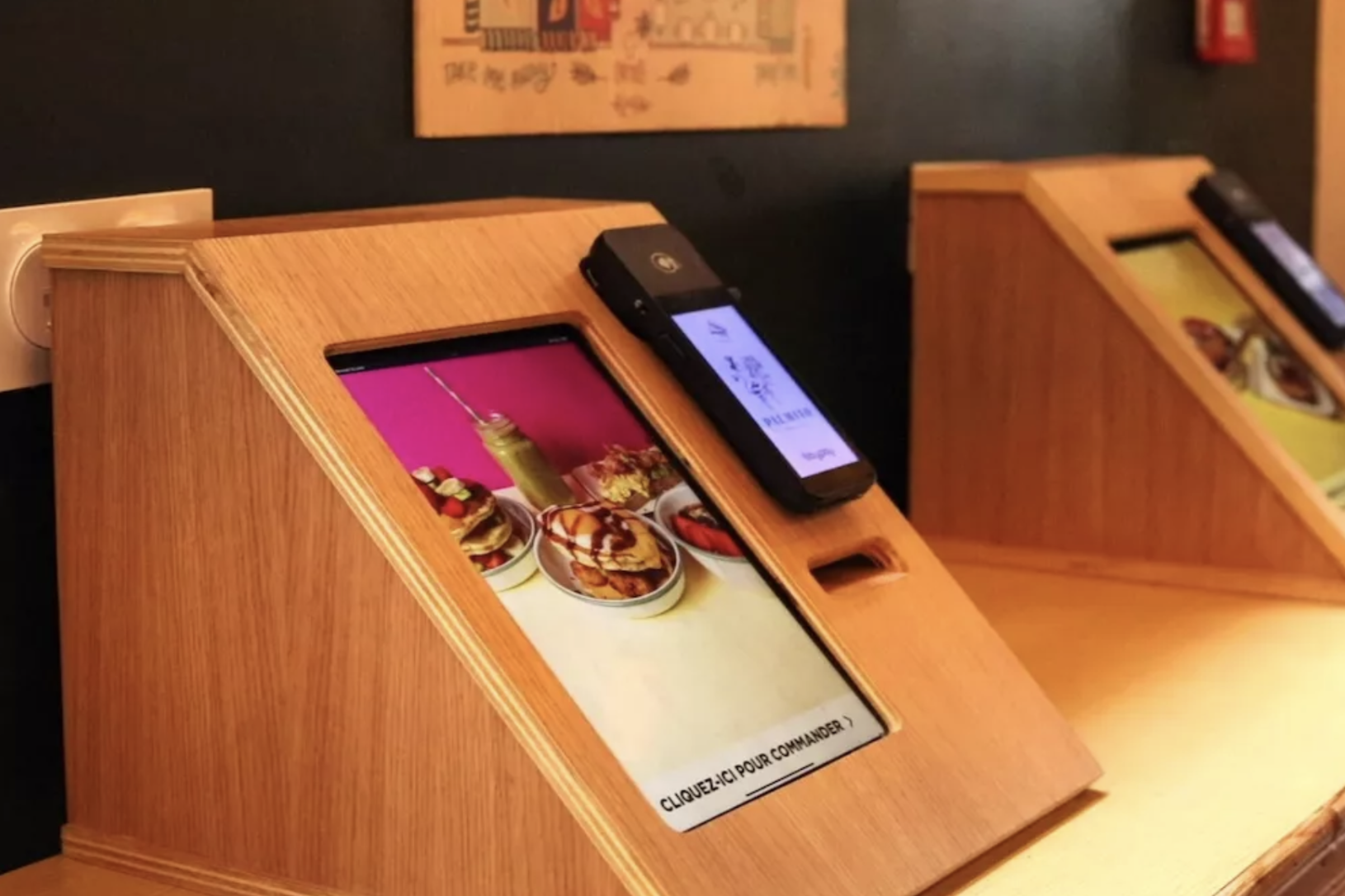
Leasing order terminals is an increasingly popular solution for restaurateurs looking to modernize their equipment without having to make a heavy, immediate investment.
Like car leasing, this option lets you rent high-performance equipment over a fixed period, with fixed monthly payments and services included. This flexible model offers significant advantages, particularly in terms of cash management, maintenance and access to the latest technologies.
Why are more and more restaurateurs choosing to lease their kiosks? How can this option be perfectly adapted to your establishment's needs?
We tell you all about it.
What is control terminal leasing?
Leasing a Self ordering kiosk works in a similar way to car leasing, a well-established and widespread practice. It's a flexible solution that lets you rent equipment over a set period, rather than buying it outright.
➜ Fixed monthly payments : As with a leased car, you pay fixed monthly installments to use the control terminal. This facilitates cash flow management, as there is no large initial investment to make.
➜ Maintenance and support included : Just as car leasing contracts often include maintenance, kiosk leasing contracts generally include maintenance and technical support. This ensures that the equipment remains in good working order without unexpected costs.
➜ Technology updates : Leasing keeps you up to date with the latest innovations. In the automotive industry, this means driving vehicles equipped with the latest technology. For order kiosks, this ensures that the restaurant is always using the most advanced tools to improve customer experience and operational efficiency.
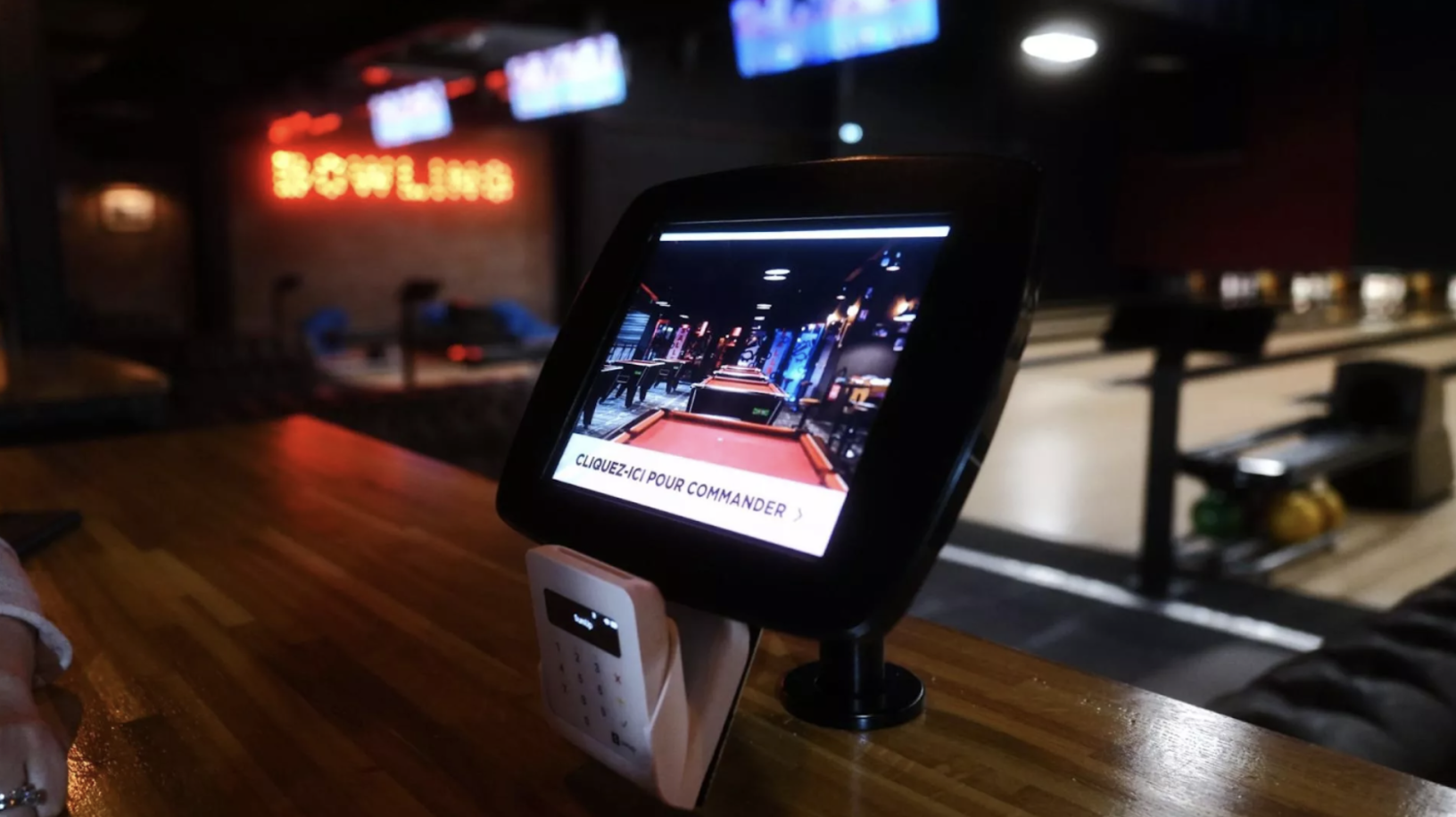
Why are more and more restaurateurs considering leasing?
Leasing has become a popular solution among restaurateurs in recent years. Here's why more and more foodservice professionals are choosing this option:
1/ For financial flexibility
Leasing allows restaurateurs to spread costs over a longer period, making cash management easier.
Rather than spending a large sum up front on expensive equipment, leasing divides payments into more affordable monthly installments.
✔ This preserves capital for other strategic investments such as marketingor the development of the structure.
2/ For adaptability
Leasing offers great flexibility to adapt to the needs and developments of companies.
Restaurateurs can easily add or replace kiosks as their business grows or new market requirements arise.
✔ This adaptability means we can respond quickly to consumer trends and expectations, without the constraints of equipment ownership.
3/ For simplified management
Restaurateurs benefit from a turnkey solution where the supplier manages upgrades, maintenance and repairs.
✔ This reduces the administrative burden and enables better budget planning thanks to fixed, predictable costs.
4/ Maintenance and support included
Most leasing contracts include regular maintenance, reducing the risk of breakdowns and unexpected repair costs. Restaurateurs benefit from ongoing technical support, ensuring fast, efficient troubleshooting in the event of a problem.
✔ This minimizes service interruptions and guarantees an optimal customer experience.
5/ Reducing risks and constraints
With purchase, there's always a risk that the equipment will quickly become obsolete. Leasing mitigates this risk by enabling regular upgrades. Leasing contracts often offer early termination or short-term renewal options.
✔ Giving you additional flexibility to match your company's performance and needs.
6/ (Bonus!) For tax benefits
Leasing can also offer tax advantages. Leasing payments are often considered operating expenses and may be tax deductible, unlike equipment purchases which require depreciation over several years.
✔ This distinction can improve a company's tax position by reducing its income tax.
"Leasing order kiosks offers a financially viable and advanced solution tailored to the needs of restaurateurs. By optimizing costs, guaranteeing a state-of-the-art solution and enhancing the customer experience, leasing is emerging as a winning strategy for restaurants of all sizes."Expert advice
How much does a leasing terminal cost?
How much does a control terminal cost to buy?
The cost of a kiosk can vary according to model and functionality. In general, prices range from 2,000 to 4,000 euros per terminal, depending on the level of sophistication and services included.
How much does a leasing terminal cost?
Leasing costs depend on the duration of the contract and the services included.
On average, prices range from 50 to 200 euros per month per terminal. This allows restaurateurs to spread their expenses and benefit from an all-inclusive service.
Is it possible to rent a control terminal?
Yes, renting control terminals is an alternative to leasing. This option is generally more flexible, but also more expensive in the long term. It is ideal for short-term needs, or for testing the efficiency of bollards before committing to a leasing contract.
Beware of leasing costs!
It's important to read the terms of the leasing contract carefully. Additional charges may apply for maintenance, software updates, or penalties for early termination of the contract.
When considering the leasing of control terminals, it's essential to understand the specifics of the supplier's offer.
✔ Direct leasing : Unlike other leasing solutions that go through a third-party payment organization, Obypay offers a direct payment facility model with its customers, avoiding the additional costs associated with third-party organizations.
✔ Affordable daily rate : The cost of a kiosk is quickly absorbed. For example, a €2,100 kiosk costs less than €6 per day for a restaurant open all year round, as is often the case for fast food franchise.
✔ Fast return on investment : With a control terminalYou can expect an increase in the average basket of around 30 % and an increase in the number of orders. These improvements quickly cover the daily cost of the kiosk, making the investment particularly profitable.
"At Obypay, we offer a flexible, straightforward leasing solution, facilitating access to high-quality ordering kiosks while ensuring a rapid, tangible return on investment for restaurateurs. "Obypay's payment facility offer
How do I install a kiosk in my restaurant?
1/ Model selection
The first step is to choose the Self ordering kiosk that best suits your restaurant's specific needs. Suppliers generally offer a wide range of kiosks with different features and options.
2/ Contract signature
Once the model has been selected, a leasing contract is signed. This contract specifies the leasing period, payment terms, included services (such as maintenance and upgrades) and termination terms.
3/ Planning and deployment
Once the contract has been signed, it's important to plan the installation and deployment of the kiosks. This includes coordinating the best dates and times for installation to minimize disruption to your service.
Planning must also take into account potential adjustments to your interior layout to integrate the bollards optimally.
4/ Installation and training
Once the contract has been signed, you have the flexibility to choose who will install the kiosks in your facility.
You can choose to install the system yourself, or have the supplier do it for you, at an additional cost. This flexible approach allows you to control the installation process according to your preferences and specific needs.
5/ Assessments and adjustments
Once kiosks are installed and operational, it's essential to evaluate their performance and make any necessary adjustments. This may include software configuration changes, adjustments to the user interface, or revisions to internal processes to improve efficiency. Gather feedback from your staff and customers to identify areas for improvement.
6/ End of contract and renewal
At the end of the leasing contract, you usually have the option of renewing the lease, upgrading to newer models, purchasing or returning the equipment. This flexibility means you always have the technology best suited to your business.
With Obypay, it's a little different. Congratulations, you've become the proud owner of a modern kiosk! As well as benefiting from advanced equipment, you'll also enjoy ongoing technical support and free updates, ensuring that your kiosk remains at the cutting edge of technology. It's a complete solution that combines functionality and peace of mind.
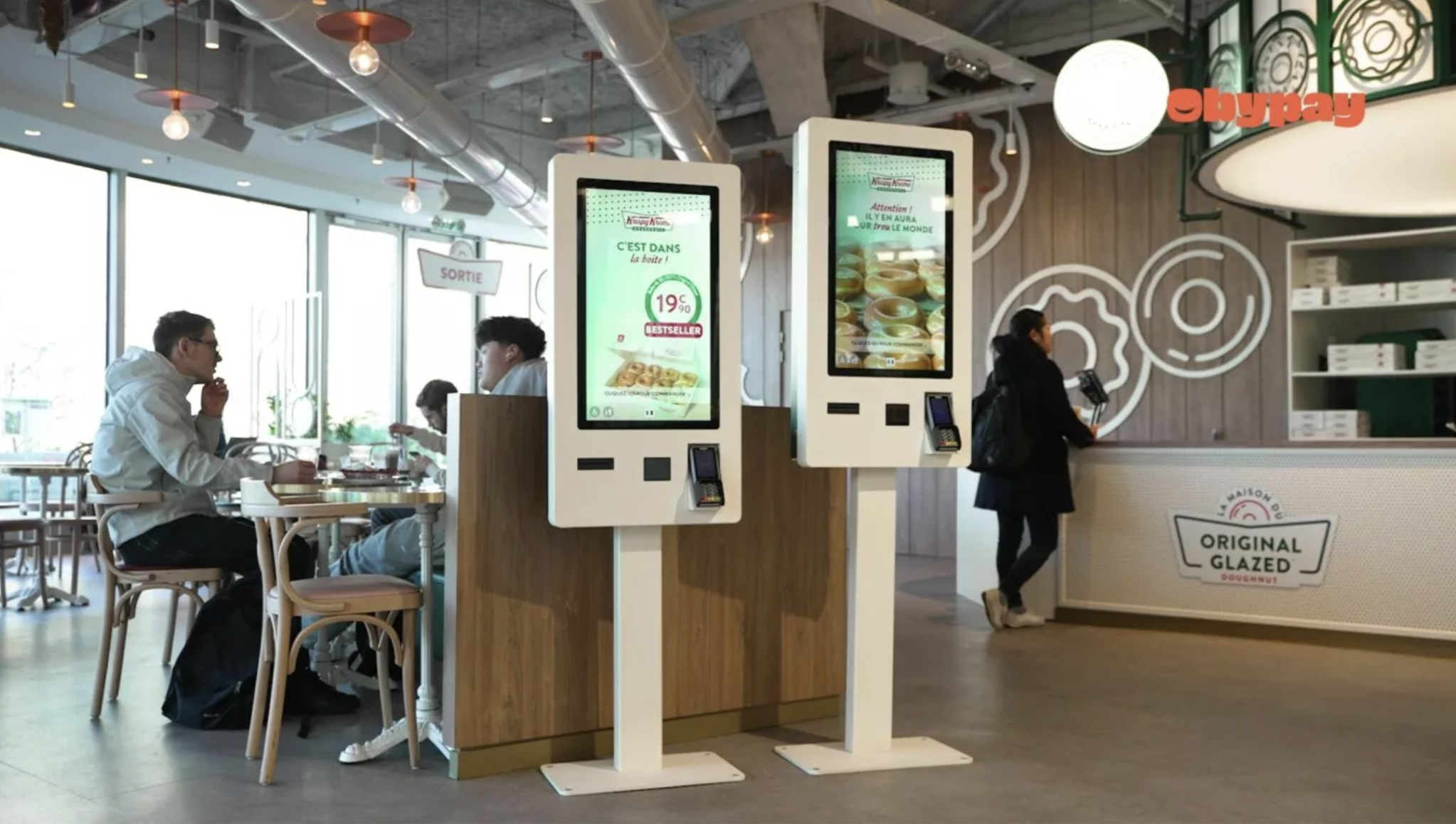
How to choose the right kiosk for your restaurant?
If you're reading this, you're probably thinking about how best to equip your restaurant.
Although we've already analyzed the financial aspects of leasing, choosing the right terminal goes far beyond a simple cost calculation. You're at the crucial stage where every detail counts to optimize your customers' experience and improve the efficiency of your service.
To help you make the best choice, we've put together a quick rundown of the key elements to consider when taking the command terminal plunge.
This will give you an overview of the different types of kiosks available and the key factors for selecting the one that best suits your establishment.
Want to take your thinking further? We've included our best guides at the end of the article!
What types of control terminals are available on the market?
Ordering kiosks come in a variety of types, each adapted to specific contexts and offering distinct advantages for different catering styles. Here's an overview of the main types of kiosk available on the market:
➜ Countertop terminals : Ideal for fast foodThese kiosks are placed on the counter to facilitate quick ordering.
➜ Standing bollards : Stand-mounted bollards are particularly suitable for busy restaurants, such as fast food and fast-food chains.
➜ Wall terminals : Perfect for food courtsThey save floor space and are easy to access.
➜ Tablets on the table : Used in the traditional cateringbut also in the leisure complexes like bowling alleys or the karaokeThey allow customers to place orders directly from their table.
How do you choose the right control terminal for your business?
Choosing the right ordering terminal for your restaurant has a direct impact on optimizing the customer experience and improving internal efficiency.
A number of criteria need to be taken into account to make the right choice. Here are the main elements to consider:
➜ Terminal type : Choose the type of kiosk that suits your service style and available space.
➜ Features : Opt for kiosks with the features your business needs, such as payment options or order personalization.
➜ Ergonomics and design : Ergonomics and design are important for a pleasant user experience.
➜ Reliability and technical support : Make sure that the terminals are reliable and that the supplier offers good technical support.
➜ Cost and financing options : Compare costs and financing options to choose the solution offering the best return on investment.
➜ Aesthetics: The aesthetics of the bollards must blend harmoniously into your establishment.
Still here? That's a good sign!
We hope this article has given you a clear picture of the benefits of leasing and the essential elements to consider when making the best choice for your restaurant.
As promised, we're sharing our top tips to help you with your projections:
➜ Guide: Everything you need to know about ordering kiosks for fast-food outlets
➜ Which order-taking system should you choose for your restaurant?
➜ Catering: how much does a kiosk cost?
Even better, we give the floor to restaurateurs to talk about their experiences, and there's something for everyone:
➜ Franchise : find out more about Krispy Kremethe world leader in donuts
➜ Food Court : Food Courts HEAT & Palmito open their doors to you
➜ Fast Food : Pock'n'roll talks about the customer journey
➜ Bowling : We discussed increasing the average basket with Bowling Factory
Looking for personalized support? Our experts are available to discuss your needs and propose customized solutions for your facility.








